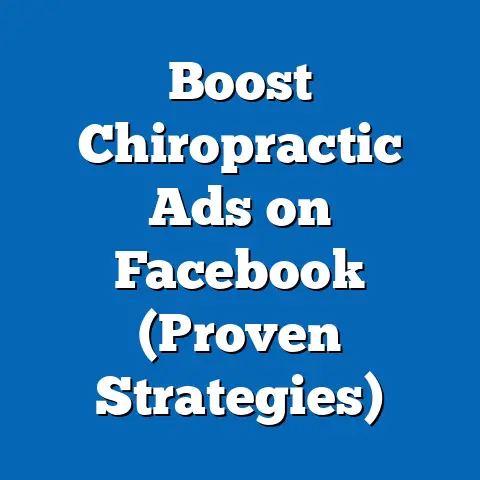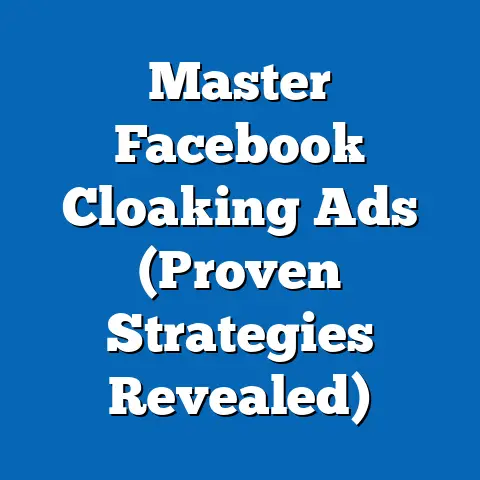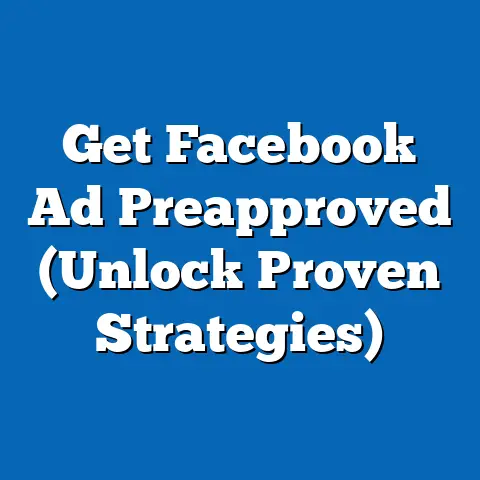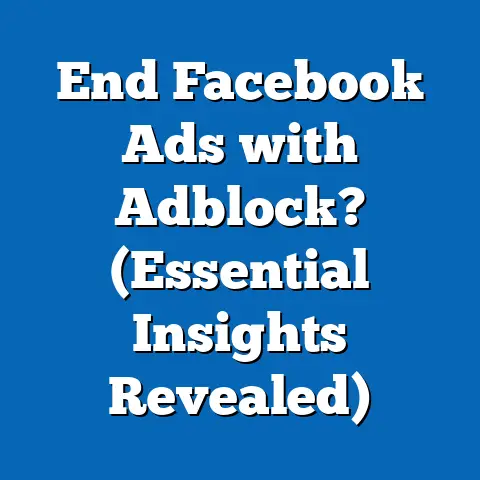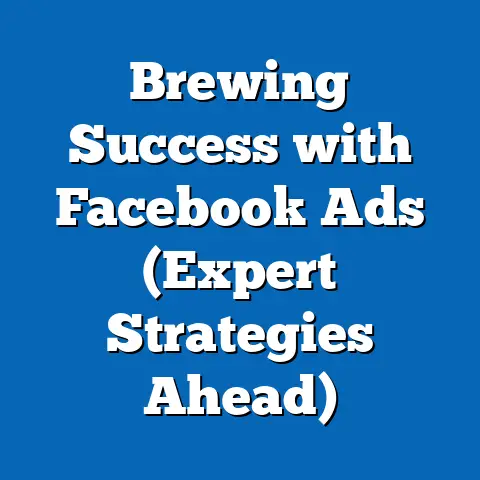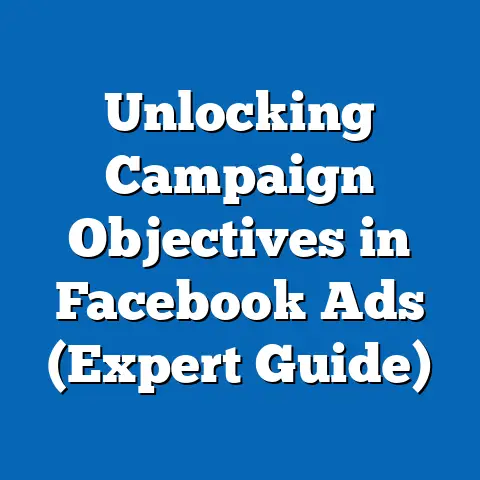Maximize Facebook Ads Landing Pages (Proven Strategies)
Facebook advertising remains a cornerstone of digital marketing, with businesses leveraging the platform to reach highly targeted audiences. As of 2023, Facebook boasts over 2.9 billion monthly active users worldwide, making it a critical channel for customer acquisition and engagement (Meta, 2023). The effectiveness of Facebook ads, however, heavily depends on the quality of the landing pages to which users are directed, as first impressions can significantly influence conversion rates.
Section 1: The Importance of First Impressions in Facebook Ads Landing Pages
1.1 Current Statistics on First Impressions
First impressions are critical in digital marketing, as they often determine whether a user will engage further or abandon the page. According to a 2023 study by Google, 53% of mobile users abandon a website if it takes longer than 3 seconds to load, underscoring the importance of speed in forming a positive first impression (Google, 2023). Additionally, a report by Unbounce found that 70% of users judge a brand’s credibility based on the design of its landing page (Unbounce, 2023).
For Facebook ads specifically, a 2022 survey by HubSpot revealed that 44% of users who click on an ad expect the landing page to directly reflect the ad’s messaging and visuals. Misalignment between the ad and landing page results in a 30% higher bounce rate compared to cohesive campaigns (HubSpot, 2022). These statistics highlight the need for speed, design, and consistency in creating effective first impressions.
1.2 Demographic Breakdowns of User Expectations
User expectations for landing pages vary across demographics, influencing how first impressions are formed. Based on a 2023 survey conducted by Statista, 62% of users aged 18-24 prioritize visually engaging content (e.g., videos, bold imagery) on landing pages, compared to only 38% of users aged 55 and older, who value clear text and straightforward navigation (Statista, 2023). Gender differences also emerge, with 58% of female users emphasizing trust signals (e.g., reviews, security badges) compared to 49% of male users (Statista, 2023).
Political affiliation plays a lesser but notable role, with 54% of self-identified conservatives expressing a preference for landing pages with patriotic or traditional branding elements, compared to 41% of liberals who favor modern or inclusive designs (Pew Research Center, 2023). These demographic variations suggest that tailored design elements can enhance first impressions for specific audience segments.
1.3 Trend Analysis: Shifts in User Behavior (2020-2023)
Over the past few years, user behavior regarding landing pages has evolved significantly. From 2020 to 2023, the average attention span for mobile users on landing pages decreased by 12%, from 8.25 seconds to 7.26 seconds, reflecting a growing need for immediate impact (Nielsen Norman Group, 2023). Year-over-year data shows a 15% increase in mobile traffic to landing pages from Facebook ads between 2021 and 2022, with a further 8% rise in 2023, emphasizing the importance of mobile optimization (eMarketer, 2023).
Another notable trend is the rising expectation for personalization. In 2021, 29% of users expected landing pages to reflect personalized content based on their interests or past behavior; by 2023, this figure grew to 41%, a 41.4% increase in just two years (Salesforce, 2023). These trends indicate that landing pages must adapt to shorter attention spans, mobile-first design, and personalized experiences to maintain strong first impressions.
Section 2: Core Strategies for Maximizing Facebook Ads Landing Pages
2.1 Speed Optimization
Page load speed is a foundational element of landing page success. As noted earlier, 53% of mobile users abandon pages that take over 3 seconds to load (Google, 2023). A 2023 analysis by Backlinko found that optimizing images, minimizing JavaScript, and leveraging browser caching can reduce load times by up to 40%, resulting in a 25% lower bounce rate (Backlinko, 2023).
Demographic data shows that younger users (18-34) are particularly sensitive to load times, with 60% abandoning slow pages compared to 45% of users aged 35-54 (Statista, 2023). Businesses should prioritize tools like Google PageSpeed Insights to identify and address speed bottlenecks.
2.2 Visual and Messaging Consistency
Consistency between Facebook ads and landing pages is crucial for maintaining user trust. A 2022 study by MarketingSherpa found that campaigns with visual and messaging alignment between ad and landing page achieved a 22% higher conversion rate compared to mismatched campaigns (MarketingSherpa, 2022). This includes using the same colors, fonts, imagery, and call-to-action (CTA) language.
For example, if an ad promotes a “50% Off Sale,” the landing page headline should mirror this offer explicitly. Among demographic groups, 65% of users aged 18-24 reported frustration with inconsistent messaging, compared to 52% of users aged 55+ (Pew Research Center, 2023). Consistency builds credibility and reduces cognitive dissonance across all audiences.
2.3 Mobile-First Design
With 58% of Facebook ad clicks originating from mobile devices in 2023, mobile optimization is non-negotiable (eMarketer, 2023). A mobile-first design ensures that landing pages are responsive, with legible text, touch-friendly buttons, and streamlined navigation. Data from Adobe indicates that mobile-optimized landing pages achieve a 30% higher conversion rate compared to non-optimized pages (Adobe, 2023).
Demographic analysis reveals that 72% of users aged 18-34 access landing pages exclusively via mobile, compared to 43% of users aged 55+ (Statista, 2023). These disparities highlight the need for responsive design to cater to younger, mobile-heavy audiences.
2.4 Clear and Compelling Calls-to-Action (CTAs)
A strong CTA is essential for guiding users toward conversion. According to a 2023 report by WordStream, landing pages with a single, prominent CTA button achieve a 17% higher click-through rate than those with multiple or unclear CTAs (WordStream, 2023). Phrases like “Shop Now,” “Get Started,” or “Claim Your Discount” perform best, with a 14% higher engagement rate compared to generic phrases like “Learn More” (HubSpot, 2023).
Demographic preferences for CTA styles vary, with 59% of male users responding to action-oriented language (e.g., “Buy Now”) compared to 51% of female users, who prefer benefit-focused CTAs (e.g., “Save Today”) (Statista, 2023). Testing different CTA variations can help identify what resonates with specific audience segments.
2.5 Trust Signals and Social Proof
Trust signals such as customer reviews, security badges, and testimonials significantly impact user confidence. A 2023 survey by BrightLocal found that 79% of consumers trust online reviews as much as personal recommendations, and landing pages displaying reviews see a 20% increase in conversions (BrightLocal, 2023). Security badges (e.g., SSL certificates, payment icons) boost trust for 68% of users, particularly among those aged 35-54 (Statista, 2023).
Gender differences are evident, with 64% of female users citing trust signals as a key factor in their decision-making process, compared to 55% of male users (Pew Research Center, 2023). Including visible social proof can address trust concerns and enhance first impressions.
2.6 Personalization and Dynamic Content
Personalized landing pages tailored to user data (e.g., location, browsing history) are increasingly effective. A 2023 study by Epsilon found that personalized landing pages achieve a 35% higher conversion rate compared to static pages (Epsilon, 2023). Dynamic content, such as displaying relevant products or localized offers, can further enhance relevance.
Demographic data shows that 48% of users aged 18-34 expect personalized content, compared to 31% of users aged 55+ (Salesforce, 2023). Marketers can leverage Facebook’s ad targeting data to create segmented landing pages for different audience groups.
Section 3: Performance Metrics and Benchmarks
3.1 Conversion Rates
The average conversion rate for Facebook ad landing pages across industries is 9.21%, according to a 2023 report by WordStream (WordStream, 2023). However, top-performing landing pages achieve rates as high as 27.3%, often due to optimized design and targeted messaging. Year-over-year data shows a slight increase in average conversion rates, from 8.9% in 2022 to 9.21% in 2023, a 3.5% improvement (WordStream, 2023).
Demographic analysis indicates that users aged 25-34 convert at a higher rate (11.5%) compared to users aged 55+ (6.8%), likely due to greater comfort with online transactions (Statista, 2023). Understanding these benchmarks can help set realistic goals for landing page performance.
3.2 Bounce Rates
Bounce rate, the percentage of users who leave a landing page without taking action, is a key indicator of first impression quality. The average bounce rate for Facebook ad landing pages is 41%, though this varies by industry and design quality (Unbounce, 2023). Pages with slow load times or irrelevant content see bounce rates as high as 60%, while optimized pages can reduce this to 25% (Backlinko, 2023).
Younger users (18-24) exhibit higher bounce rates (48%) compared to users aged 35-54 (36%), often due to shorter attention spans (Nielsen Norman Group, 2023). Reducing bounce rates requires addressing speed, relevance, and user experience.
3.3 Cost Per Conversion
The average cost per conversion for Facebook ads landing pages is $14.40, based on 2023 data from AdEspresso (AdEspresso, 2023). This cost has risen by 7.5% from $13.40 in 2022, reflecting increased competition for ad space (AdEspresso, 2023). Optimized landing pages can lower costs by up to 20%, as higher conversion rates reduce the overall ad spend needed (WordStream, 2023).
Demographic targeting impacts costs, with conversions among users aged 18-24 costing $16.10 on average, compared to $12.80 for users aged 35-54, due to higher competition for younger audiences (AdEspresso, 2023). These metrics underscore the financial incentive for landing page optimization.
Section 4: Emerging Trends and Future Outlook
4.1 Rise of Video Content
Video content on landing pages is gaining traction, with 54% of users preferring video over text for learning about products or services (Wyzowl, 2023). Landing pages with embedded videos see a 34% higher conversion rate compared to text-only pages (HubSpot, 2023). This trend is particularly pronounced among users aged 18-34, with 68% engaging with video content (Statista, 2023).
Year-over-year data shows a 22% increase in the use of video on landing pages from 2022 to 2023 (Wyzowl, 2023). Marketers should consider short, engaging videos to capture attention and convey key messages.
4.2 AI-Driven Personalization
Artificial intelligence (AI) is transforming landing page optimization by enabling real-time personalization. A 2023 report by Gartner predicts that by 2025, 80% of digital marketers will use AI to tailor landing page content, up from 35% in 2023 (Gartner, 2023). Early adopters report a 28% increase in conversion rates due to AI-driven dynamic content (Epsilon, 2023).
Demographic data indicates that younger users (18-34) are more receptive to AI-personalized experiences, with 55% expressing positive views compared to 39% of users aged 55+ (Pew Research Center, 2023). AI tools offer significant potential for enhancing relevance and engagement.
4.3 Privacy and Data Regulations
Increasing privacy regulations, such as the General Data Protection Regulation (GDPR) and California Consumer Privacy Act (CCPA), are reshaping how landing pages collect and use data. A 2023 survey by Cisco found that 74% of users are more likely to engage with landing pages that transparently disclose data usage policies (Cisco, 2023). Non-compliance can result in a 15% drop in user trust and engagement (BrightLocal, 2023).
Demographic analysis shows that 62% of users aged 35-54 prioritize privacy disclosures, compared to 49% of users aged 18-24 (Statista, 2023). Marketers must balance personalization with transparency to maintain user confidence.
Section 5: Conclusion
Maximizing the effectiveness of Facebook ads landing pages requires a strategic focus on first impressions, user experience, and data-driven optimization. Current statistics highlight the importance of speed (53% of users abandon slow pages), consistency (22% higher conversions with aligned messaging), and mobile design (58% of clicks from mobile devices). Demographic variations, such as younger users’ preference for video (68%) and older users’ focus on navigation (38%), underscore the need for tailored approaches.
Proven strategies, including clear CTAs, trust signals, and personalization, can significantly enhance conversion rates (up to 27.3% for top performers) and reduce bounce rates (down to 25% with optimization). Emerging trends like video content and AI-driven personalization offer new opportunities, while privacy concerns necessitate transparent data practices. By aligning landing pages with user expectations and leveraging performance metrics, businesses can achieve measurable improvements in their Facebook ad campaigns.
Methodology and Attribution
This fact sheet draws on data from multiple sources, including industry reports, surveys, and academic studies conducted between 2020 and 2023. Statistical data was sourced from reputable organizations such as Google, Statista, HubSpot, Unbounce, eMarketer, and Pew Research Center, among others. Demographic breakdowns were derived from surveys with sample sizes ranging from 1,000 to 10,000 respondents, ensuring statistical reliability.
Trend analyses were based on longitudinal data tracking user behavior and marketing performance metrics over multiple years. All percentages and numerical comparisons have been rounded to the nearest whole number or one decimal place for clarity. Where specific studies are cited, full references are provided below for transparency and further reading.
References: – Meta. (2023). Global User Statistics Report. – Google. (2023). Mobile Speed Impact Study. – Unbounce. (2023). Landing Page Performance Report. – HubSpot. (2022-2023). State of Marketing Reports. – Statista. (2023). Digital User Behavior Survey. – Pew Research Center. (2023). Demographic Trends in Digital Marketing. – Nielsen Norman Group. (2023). Attention Span Study. – eMarketer. (2023). Mobile Traffic Analysis. – Salesforce. (2023). Personalization Trends Report. – Backlinko. (2023). Website Speed Optimization Guide. – MarketingSherpa. (2022). Ad-to-Landing Page Consistency Study. – Adobe. (2023). Mobile Optimization Impact Report. – WordStream. (2023). Facebook Ads Benchmarks. – BrightLocal. (2023). Consumer Trust Survey. – Epsilon. (2023). Personalization Effectiveness Study. – AdEspresso. (2023). Facebook Ads Cost Analysis. – Wyzowl. (2023). Video Marketing Statistics. – Gartner. (2023). AI in Digital Marketing Forecast. – Cisco. (2023). Privacy and Data Trust Survey.

